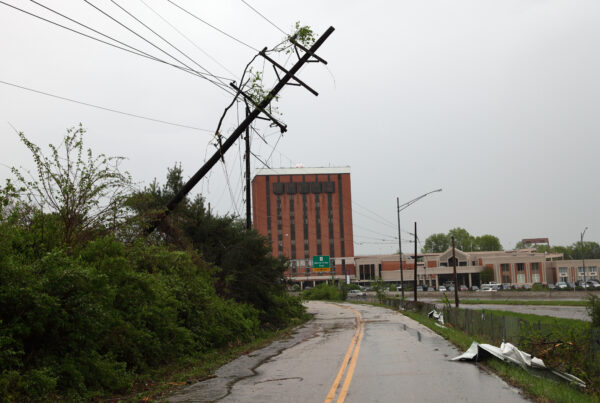Slabjacking with polyurethane foam, like our FoamJack™ system, is a popular method for lifting and leveling concrete slabs that have sunk or become uneven due to the unstable nature of soil. The empty spaces within soil can cause it to shift and compact, affecting the structures we have built on top of it, such as driveways, sidewalks and patios.
Slabjacking is an effective way to repair these structures without having to break up the existing slab.
The polyurethane components are injected under the slab through a series of holes drilled in the existing concrete, and as the components mix and react the material expands to raise the slab to the desired level.
Slabjack foam is typically made from polyurethane or styrene-butadiene rubber (SBR) and is cost-effective and efficient. It is much less disruptive than other methods, such as mudjacking, and can be done in a shorter time frame, working well in sand, rock and poor soil conditions.
Nevertheless, some concerns about using this method do prevail.
One of the main concerns is that polyurethane foam can be difficult to control when it is injected beneath the slab, so that if too much foam is used, it can cause the slab to rise too high or put too much pressure on the surrounding soil. This might result in further settling or cracking of the slab. Additionally, if not enough foam is used, it may not be able to lift the slab as desired.
While, new cracks can occur as the slab is lifted – in reality most would have already been present, just not visible before lifting. Unlike historic mudjacking, with Slabjacking, it is not the pressure of the material that lifts the slab but the expansion of the specially formulated foams that lift and level the slabs. Exact formulations are calculated for every aspect required for the project, to ensure an even and controlled result.
Concerns about leveling Concrete with Foam
- Control of Polyurethane Foam: There’s a concern that it might be difficult to control the amount of polyurethane foam injected beneath the slab, which could lead to the slab rising too high or putting too much pressure on the surrounding soil. However, the article explains that the foam used in slabjacking is specially formulated to ensure an even and controlled result.
- Strength of the Injected Foam: Some worry that the injected polyurethane foam may not be strong enough to support heavy loads over time and that the foam may eventually compress under the weight of vehicles or furniture, causing the slab to sink again. The article debunks this by stating that polyurethane lifting foam can support hundreds of thousands of pounds of weight permanently.
- Environmental Impact: There’s a concern that polyurethane foam may not be environmentally friendly because it contains chemicals that could potentially leach into nearby soil or groundwater sources. The article counters this by stating that the foam used is environmentally friendly, made from recycled materials, and classified as non-hazardous by the EPA and DOT.
Another concern is that the injected polyurethane foam may not be strong enough to support heavy loads over time and that the foam may eventually compress under the weight of vehicles or furniture and cause the slab to sink again. In reality, depending on the grade used, polyurethane lifting foam can support hundreds of thousands of pounds of weight, permanently.
Slabjack foam is not only lightweight but also water tight, placing less stress on the already weak substrate as the foam spreads, filling all the gaps under a slab. In addition it offers an effective barrier to prevent more water from draining under the slab causing more damage later on.
Consumers have thought that polyurethane foam was too expensive for small scale projects, requiring many contractors to do the job, but now with the correct equipment, projects can be completed by one person on site. The required material for the project is mixed to your specific order and shipped directly to you. The process does not require expensive, time consuming and messy digging up of existing concrete to effect the repairs or costly replacement of the concrete, but merely the drilling of several neat and discreet holes in the existing concrete through which the foam is precisely injected. It cures quickly with minimal mess and disruption to the site. In addition, slapjack foam can be easily transported to work sites inaccessible to large mudjacking rigs, making it an effective solution for virtually any job location.
Finally, some people worry that polyurethane foam may not be environmentally friendly because it contains chemicals that could potentially leach into nearby soil or groundwater sources, but our patented formulas using eco-friendly and sustainable recycled materials give us the ability to manufacture high-end, cost effective products in addition to saving good slabs from the landfill. Classified as non-hazardous material by the EPA and DOT, our polyurethane foam is HFC free, with zero global warming potential (GWP), zero ozone depletion potential (ODP), and no volatile organic compounds (VOCs). The foam has a rapid curing time of within 15-30 minutes and after this it becomes completely inert, so that no chemicals can leach into the surrounding soil or groundwater sources causing damage.
In contrast, the alternative of having to dig up existing concrete, cart it away to a landfill and transport huge concrete mixers and pourers to replace it, would be much more detrimental to the environment.
Overall, slabjacking with polyurethane foam is an effective way to lift and level a sunken concrete slab, despite the potential drawbacks mentioned, but one should always consult with a structural engineer, who can determine the integrity of the concrete and the stability of the structure on top as the concrete must be in fairly sound condition to ensure success.




